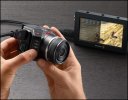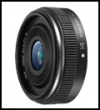kandrey89
Active Member
- Joined
- Feb 14, 2015
- Messages
- 373
- Reaction score
- 160
- Location
- San Ramon, CA
- Country
- United States
- Dash Cam
- Panorama X2, GoPro 3/3+ Black
Hi,
I was wondering what kind of options there are for dedicated camera installs where the camera is:
CS lens mount
1/2" or larger sensor
small and discrete format
I was thinking about using this for recording my drives. I drive at night and need a large image sensor, large aperture, low f number lens and higher quality image that M12 lenses just cannot provide from the dashcams.
Think of it as a police dashcam, more than a consumer dashcam.
Anyone know where I can find more info?
FYI, don't even suggest dashcams, I got 2 dual channel ones. I need a dedicated camera system with a recorder for high fidelity, high light gathering capability and high resolution (including the lens) camera/system. If a dashcam can barely make out stationary license plates 6 feet on a 30 degree off axis (12ft ahead at night and that's generous due to contrast issues), then what I need is a camera sensor/lens solution that will do 30-60ft at 30 degrees off axis, and up to 100ft on axis/ahead.
I might be interested in installing forward tight beam IR illuminators to help with night illumination.
Both monochrome and color options are considered.
I was wondering what kind of options there are for dedicated camera installs where the camera is:
CS lens mount
1/2" or larger sensor
small and discrete format
I was thinking about using this for recording my drives. I drive at night and need a large image sensor, large aperture, low f number lens and higher quality image that M12 lenses just cannot provide from the dashcams.
Think of it as a police dashcam, more than a consumer dashcam.
Anyone know where I can find more info?
FYI, don't even suggest dashcams, I got 2 dual channel ones. I need a dedicated camera system with a recorder for high fidelity, high light gathering capability and high resolution (including the lens) camera/system. If a dashcam can barely make out stationary license plates 6 feet on a 30 degree off axis (12ft ahead at night and that's generous due to contrast issues), then what I need is a camera sensor/lens solution that will do 30-60ft at 30 degrees off axis, and up to 100ft on axis/ahead.
I might be interested in installing forward tight beam IR illuminators to help with night illumination.
Both monochrome and color options are considered.





